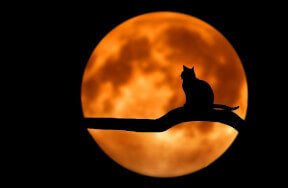
NASAs Hubble Space Telescope is one of the most amazing scientific instruments that captures pictures of our universe the human eye would never see.
NASA's Hubble Space Telescope has given us the most spectacular look at the universe. The Hubble telescope has captured many events including a colliding galaxy called "Tadpole." Another picture is a stunning collision between two spiral galaxies called "The Mice." NASA's Hubble Space Telescope has been around since 1990 and is one of the most amazing pieces of scientific equipment in orbit. Here's a look at how Hubble Space Telescope works.
Hubble isn't on NASA's balcony. It's actually "flown" like a spacecraft. Think of a robot or computer in space that only responds to specific instructions from people on the ground. Hubble has communications antennae so astronomers and technicians can tell the telescope what to do and when to do it. Four antennae send and receive info between the telescope and the Flight Operations Team at the Space Telescope Science Institute.
In order for NASA's Hubble Space Telescope to work, it needs electricity. There isn't an extension cord long enough to reach the ground from space, so Hubble runs on sunlight. This makes it the ultimate cordless power tool. On either side of the telescope's tube are two wing-like solar panels which convert sunlight into about 3,000 watts of electricity. That's enough power to light 30 household light bulbs.
Hubble Space Telescope has five instruments that work together, or individually, to provide us with impressive images from the furthest depths of space. Hubble is made up of 3 cameras, spectrographs and guidance sensors. For more info on these instruments, click here.


































